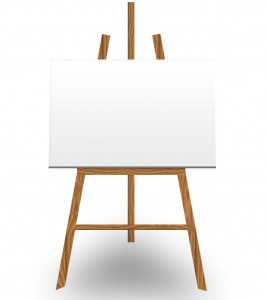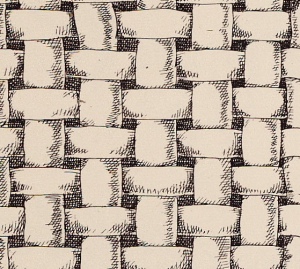What Exactly Is Canvas?
And here we go! This is the official blog of CanvasLot.com, and we’re setting out to become your place for everything canvas. From the rich history of canvas use throughout the world to the itty-bitty details that go into making the best canvases around, this blog will show you everything you ever wanted to know about canvas, and maybe a little more. Like the magnificent products we lovingly craft and bring to you, this blog is blank, primed and ready to be covered in exciting and interesting details, so let’s get started!
We thought about the best jumping off point for our brand new blog, and we decided there’s no better place to start than the basics. So, today we’re going to answer a question you may not know you even had: what exactly is canvas? Like most people, you probably have an image of a canvas that immediately pops to mind- maybe a painted canvas, maybe a freshly packaged one, maybe a French guy with an easel and a beret – but do you actually know what canvas itself is made from? What about the difference between canvas and other fabrics? Let’s take a look!

Material-wise, canvas is actually more complicated than many people realize. Most everyone can call to mind what canvas looks and feels like, but not everyone knows that there are actually many kinds of canvas. Most canvas these days is made of one of two materials, those being the ubiquitous cotton and linen. This, however, was not always the case. For many, many centuries, canvas was more often than not made of hemp. In fact, the name “canvas” comes from the Latin word cannapaceus, which literally means “made of hemp.” Eventually, linen was found to be a better fabric for canvas making, and cotton, in turn, later became the dominant material. These fabrics aren’t the only ones used for canvas, however. Materials of all sorts are used to create canvas, including jute and, in recent years, polyester.
Obviously not all objects made of cotton, linen or hemp can be called canvas, but what is it that makes the difference? The answer is actually rather simple- it’s the weave! There are essentially three basic ways that most fabrics are woven together: plain, satin and twill weave. Canvas uses the simplest of these, the plain weave, which simply means that the threads used to make canvas are woven together in a criss-cross pattern. Plain weave makes canvas easy to make, tough and more rigid, as opposed to soft and flexible. Satin and twill weave, on the other hand, use more complicated weaving techniques to create different, softer textures that are used for decorative or clothing items.

Past the material and the weave, canvas comes in two styles- “plain” and “duck.” These terms refer again to the weave, but unlike the previous three, plain and duck refer to the tightness of the weave rather than the style. The difference between the two is that plain is more loosely woven, while duck canvas is tighter. Appropriately, the word “duck” comes from the Dutch word for cloth, doek.
The last major feature used to designate a material as canvas is its classification, a detail determined in two ways, both of which deal with weight. The first is the canvas’ actual weight in ounces per square yard, which is fairly straightforward and easy to determine. The second is a bit more complex, weighing a piece of duck canvas 36 by 22 inches and classifying it according to two grading systems. The two grading systems feature one for canvas that weighs less than 19 ounces per square yard and another for those 19 ounces or more. The first system grades are 1, 2, 3, 4, 5, 6, 8, 10 and 12, with 12 being the lightest, and the second system goes from 1/0 to 6/0.
While there are many variations on canvas and many other features canvases can have (such as priming, stretching vs. canvas boards, etc.), this simple guide gives a good, basic idea of what exactly canvas material is. If any of the particulars pique your interest, and you want more details, fear not! Over the next few weeks, we’re going to dig deep into every corner of the wide world of canvases, and we’ll be bringing you every nugget of info you’ve ever wanted to know. So stick with us, stay tuned to this spot, and in the meantime, get to your canvases and